Chloe
by Lisa Aedo. All photos used with permission from Aedo Productions unless otherwise noted.
Over the years, I have often wondered what it is that gives rise to different cultures and ways of living on the earth. In Scandinavia, the Vikings built houses with thatched or green roofs and shared them with livestock for protection from the cold climate. This arrangement also provided safe pasture on the roof for a goat or two. In many parts of the world, site selection and landscaping are indicators of worldly status and success, often designed to impress. I remember admiring the designs and plantings in visits to Frogner Parken in Oslo, or Schönbrunn Palace in Vienna, and the Versailles in Paris. These royal commissions were all references to the Western world in their day. However, it was when we moved to Peru that I developed a sense of wonder at the size and scope of Inca landscapes and infrastructure.
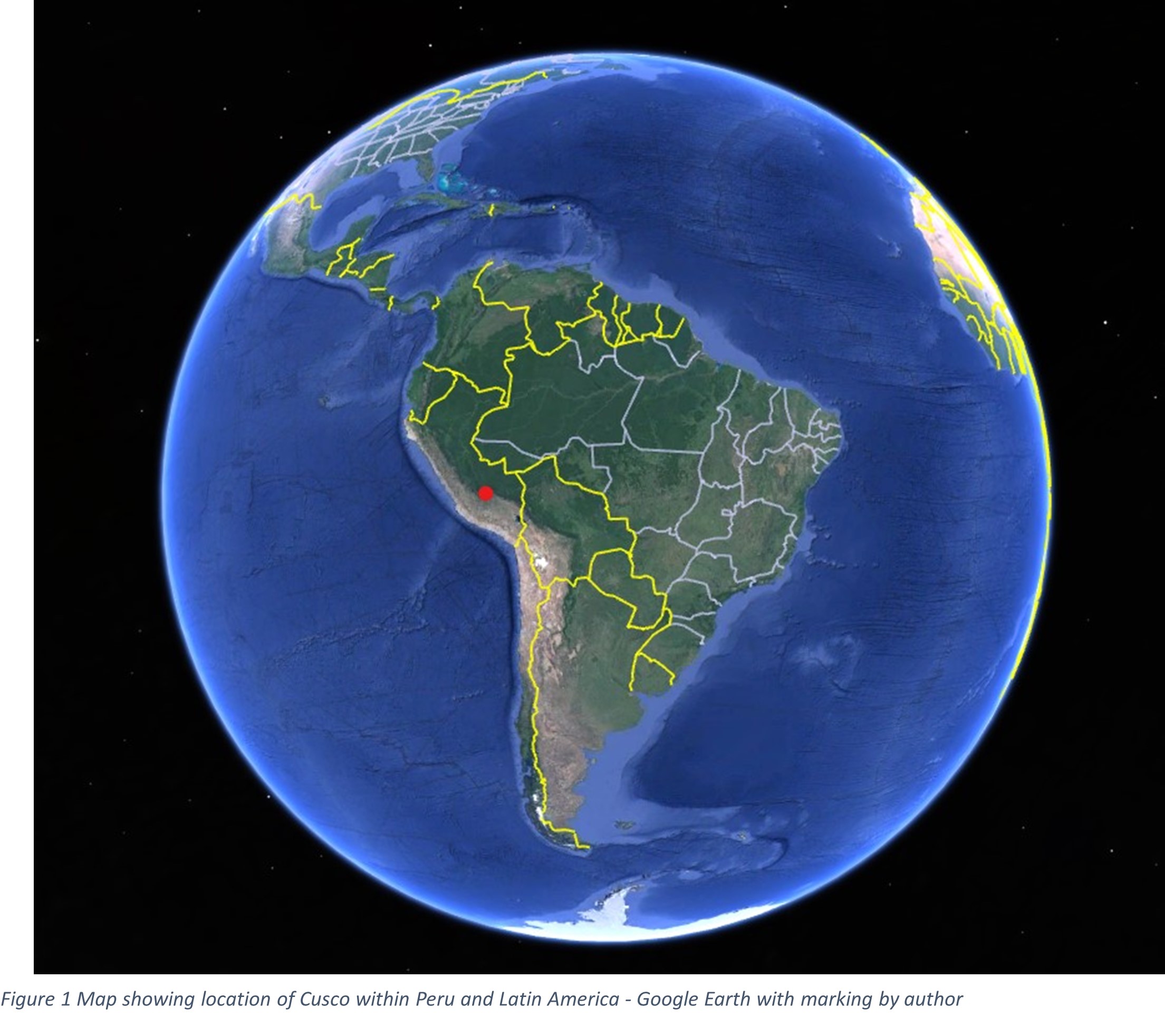
The engineering feats and community organization that made their built landscapes possible were expressions of a profound understanding of and respect for nature. They also reflected a sense of commitment and responsibility towards the welfare, both physical and spiritual, of all their citizens. Before the conquest in 1532, there was enough food stored to feed the entire Inca population, estimated at over 16 million, for at least seven years. Their road network stretched from today’s Ecuador and Colombia in the North to Chile and Argentina in the South. By building up terraces on the high, steep, Andean mountain slopes they were able to reduce erosion and create level ground for agriculture. These fields were irrigated by using hydraulic engineering principles now used in regenerative permaculture farming. The adaptations made by the Incas to survive in their particular geography and climate gave the land the characteristics now considered typical to that area. There is, however, much more to the landscape than can be seen on the surface. This is the foundation of their cultural landscape.
In the Inca cosmovision, what is in heaven is also reflected on earth. From the vantage point of the lofty Andes with peaks over 20,000 feet high, the Milky Way appears as a river, or “Hatun Mayu” (Great River) in Quechua. In it, the Incas saw shapes and figures like animals that existed in their land and were important or sacred to them.
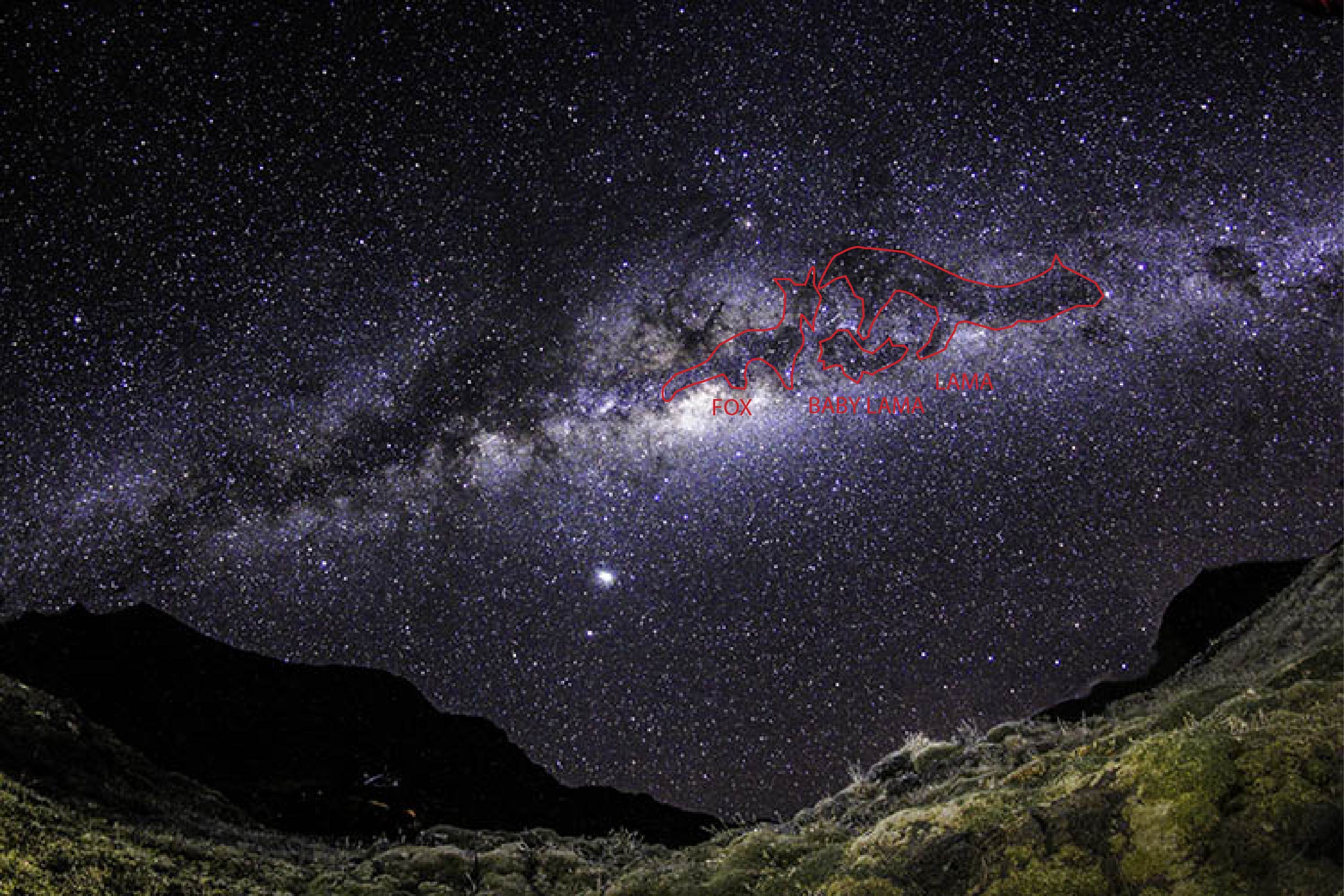
Image used with permission from Domingo Atao- Kallpa Travel – Outline of Fox and Llamas by author
This river is reflected on earth as the Willka Mayu river (Sacred River) and gives life to the Sacred Valley of the Incas just North of their former capital, Cuzco.

In the Southern hemisphere, the winter solstice occurs on June 21st. As an agrarian culture, this knowledge was important to the Incas because it marked the turning of the seasons and beginning of warmer weather. It enabled them to know when to prepare the land for planting in September when the rainy season typically starts. They celebrated it with Inti Raymi, or feast of the Sun, a highlight in the Inca calendar. Not only did the sun represent warmth, fertility, and prosperity, but also light. This is illustrated in many of the Inca structures that play with the light and shadows created by the path of the sun throughout the day and seasons.
In the Inca culture, the Incas were considered the children of the sun, and represented its power to generate life and wellbeing. With regard to the stratified social structure of the Incas, the chief Inca family served as what we would characterize the highest class in society. The nobility under them were distributed throughout the land as relatives or people with earned privilege, religiosity, and special skills. Under them were what we might call the common people. In this society, there existed a concept of “Ayni”, or reciprocity. It was an understanding that we are all needy at certain times, and that people must help each other when asked. There was also the concept of “Mita” and “Minka”, which represented communal work such as building and maintaining infrastructure including roads, bridges, irrigation canals, and other structures for the benefit of all. It was through these concepts that society functioned. They were true artists on a grand scale in their development of landscape function and design.

Moray, near the Sacred Valley, is an agricultural experimental area that illustrates how the Incas were able to refine and develop plant hybrids that could thrive at higher altitudes and climatic conditions. Specimens would be planted at the lower levels and with each successive season the new seeds were planted at higher and higher terrace levels, taking advantage of the slight change in microclimate at each level, thus allowing the surviving plants to become acclimated to different growing conditions and expanding their cultivation.
With regard to their spirituality, they considered three “levels” of existence or knowledge: The first was “Hatun Pacha” (Spiritual or high knowledge, often related to the cosmos and symbolized by the Condor); “Kay Pacha” (Knowledge related to the here and now, represented by the Puma); “Ukhu Pacha” (Hidden knowledge or related to the underworld, symbolized by the Snake). What I found fascinating was the Inca’s use of these symbols and important zoomorphic and anthropomorphic forms in their landscape designs. On the road from Cusco towards the Sacred Valley, as one descends towards the village of Pisaq, there is a display of one of these animals:
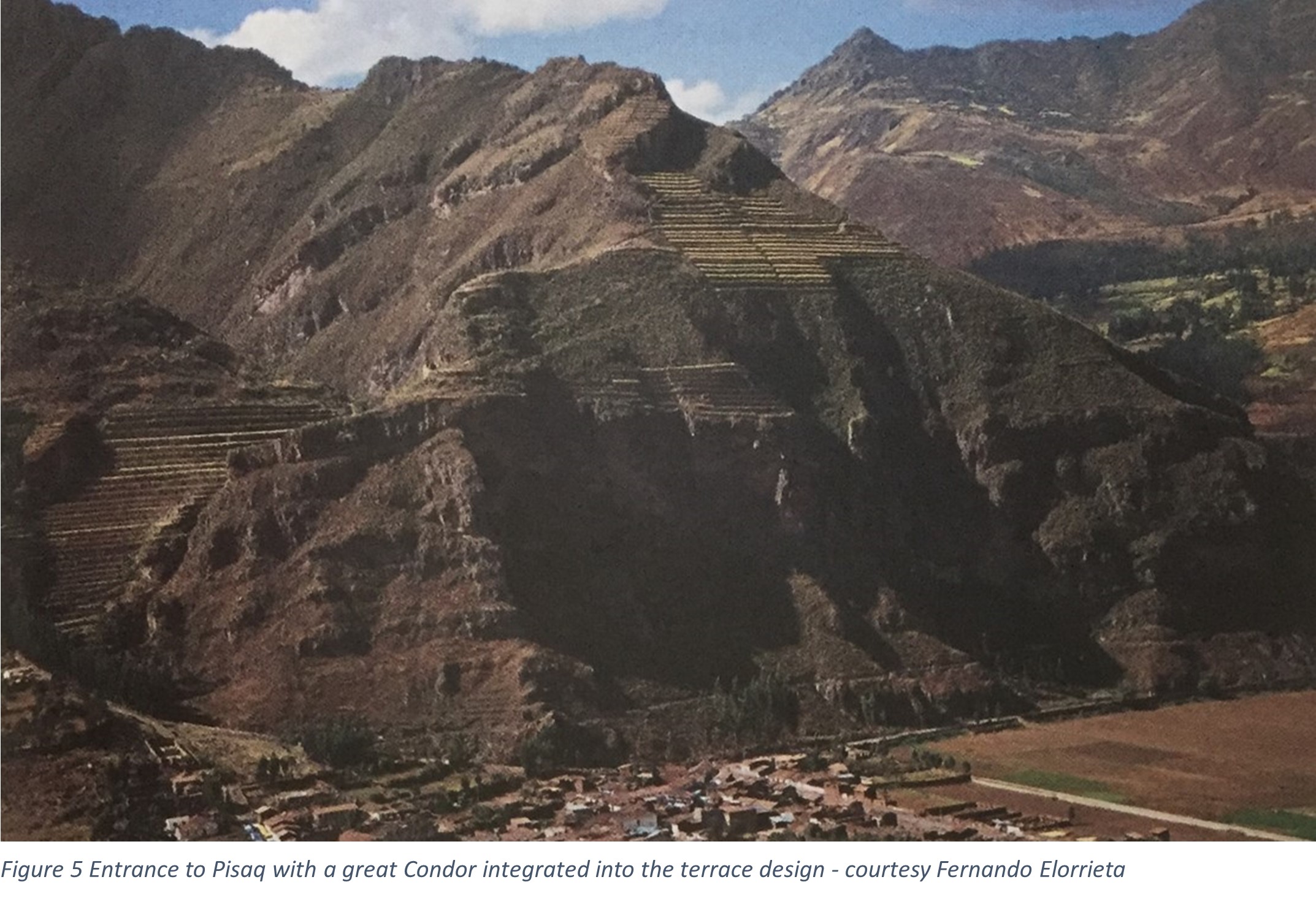
While not noticeable at first because of the sheer magnitude of the design, the following artistic rendering clearly outlines the head and collar, as well as the outstretched wings of this sacred bird. What is of particular note is that the top of its head is also the location of the temple or most important sacred structure of the design.
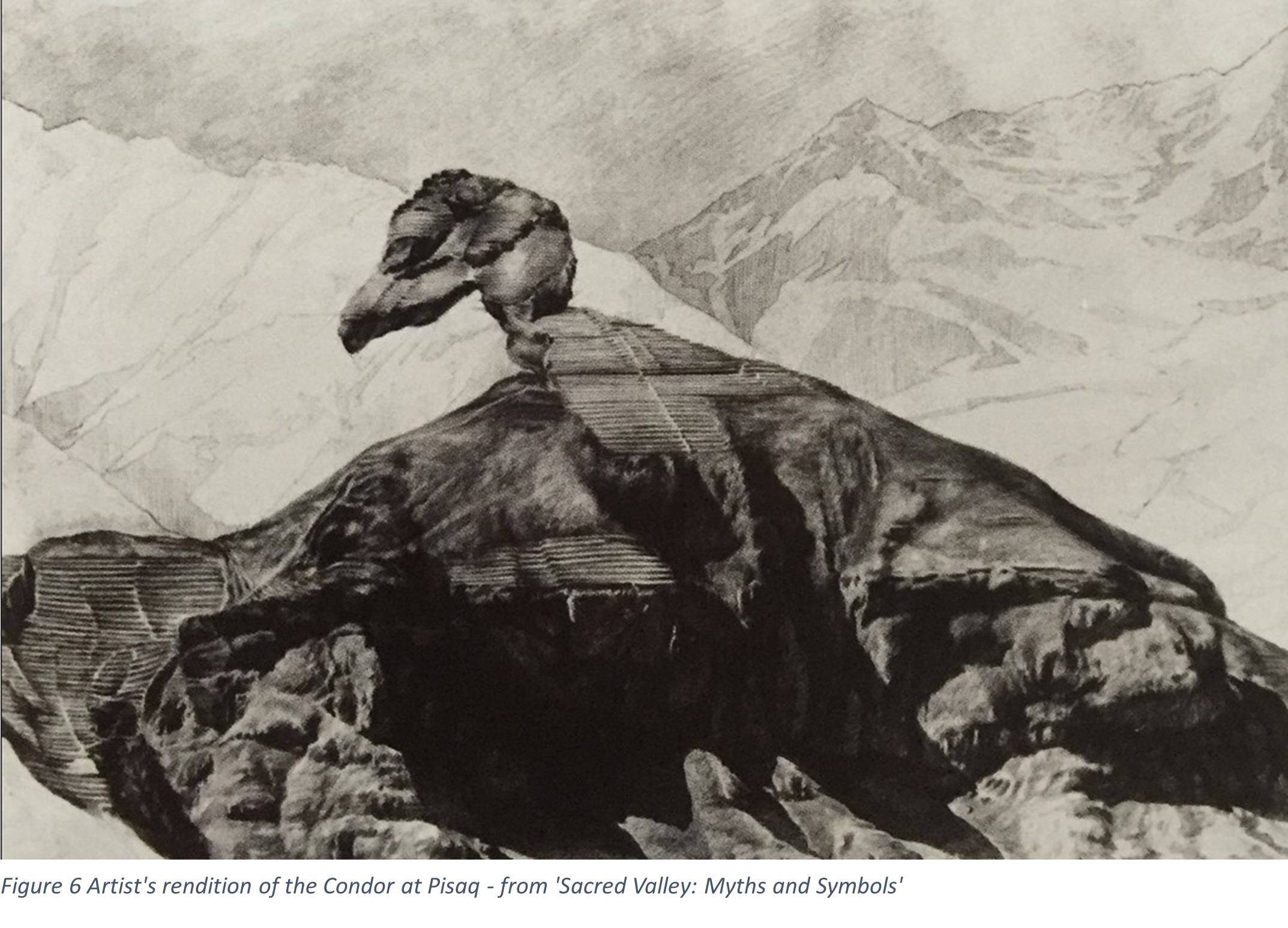
Another example of this type of design is located further down the valley in Ollantaytambo. The mountainside is also terraced, but this time in the form of one of the animals found in the Milky Way or Hatun Mayu.
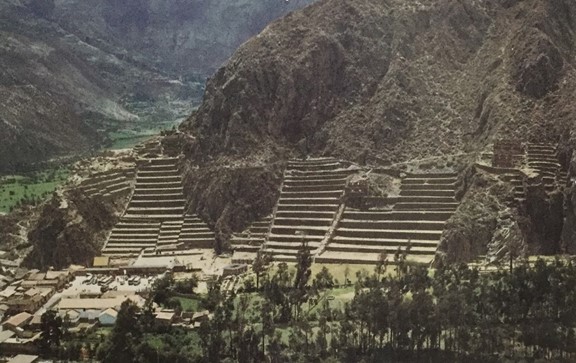
Used with permission by publisher – Aedo Productions. Credits: Fernando Elorrieta
In this artist’s rendering, we can again see that the head is of special importance. Area “A” contains the most finely crafted stonework and represents the most sacred spot in the design. “B” is in the location of the eye of the animal, and is lit up by the sun at a specific time of the year, possibly as a reminder of an important date in their calendar. Areas “C” and “D” bear relation to the bodily functions of the animal.

My last example of the Inca’s use of sacred symbolism in their landscape design is well known for its impossible location and inspiring construction. Machu Picchu was one of the last structures built by the Incas. While it is often translated as “Old Mountain”, its name can also mean “Old Bird” in Quechua. With the following illustrations the reason becomes evident. Here it is seen from above, at the top of adjacent mountain Huayna Picchu. The Condor, in Inca mythology, served as the messenger between heaven and earth. As observed, the terrace designs of Machu Picchu form the shape of a Condor in flight. For this reason, Machu Picchu is considered a sacred place of pilgrimage; a sanctuary where people from distant areas would come to make their petitions in the belief that the Condor would bring their messages to heaven.

Used with permission by publisher – Credits-Fernando Elorrieta


Artist’s rendering of Machu Picchu – As seen from Huayna Picchu and upside down, revealing a flying Condor – Used with permission by publisher – Credits – Fernando Elorrieta
Throughout the Americas, there is a recurring myth of a cultural hero who helped civilize communities suffering from conflict and ignorance. In Quechua, he was known as Wiracocha; in Aymara, Tunupa. He taught them how to live in peace and work in harmony with nature. After performing many miracles and bringing much knowledge to the people, he left by way of the sea. According to their legend, he promised to return. The native inhabitants of the Sacred Valley say that the 200 foot image found carved in the mountainside at Ollantaytambo is the image of Tunupa.

Wiracocha, or Tunupa, as seen from the main square in Ollantaytambo
I marvel at the spiritual expressions left by the Incas and their predecessors. Their legacy reminds me of our mandate to remember who we are and to be good stewards of the earth. Their work with the existing landscape serve as a reminder that as we shape the landscape, it also shapes us. They made the earth productive in ways that also reminded them of the spirituality at the heart of what they did. And all benefited. There is much to learn from other cultures. When we open our minds to mutual understanding, we start filling in knowledge gaps and build on common ground. What the Incas reflect to me in their landscape design and sensitive use of resources is a deep reverence for life and God’s creation. The Incas and their forebears not only built terraces, but also symbols of their spiritual beliefs so that everywhere they looked, there was an object or activity which helped focus on the sacred within.
When I think of my belief in God and Jesus Christ, creators of our earth, and the knowledge imparted from the Book of Mormon about Christ visiting the American Continent and telling the Nephites that he had ‘other sheep’ to visit, I wonder if this might not be one place he visited, and that the Inca predecessors and descendants transmitted these stories for many generations. The legacy of teaching people to live in harmony with each other and performing miracles coincides with what we believe of Christ. In his ‘First New Chronicle of Good Government’, Felipe Guaman Poma de Ayala mentions that they (the Incas) knew of Christ before the conquest. They also lived in harmony with nature in ways that showed a deep sense of spirituality and reverence towards nature. Christ’s example to us is grounded in love: Love of God and neighbor, including all His creation. I can only imagine what a difference it would make if we as individuals, communities and nations on earth focused on this simple idea.
Lisa (Jorgensen) Aedo was born in Pennsylvania and grew up in Norway and Switzerland. Her husband, Cesar, is a native of Peru. She has a masters in landscape architecture and currently works as a designer in St. George, Utah.
Note: Blog posts are written by volunteer writers; the opinions of writers are their own and are not necessarily representative of Latter-day Saint Earth Stewardship.
Planting Mangroves in the Philippines
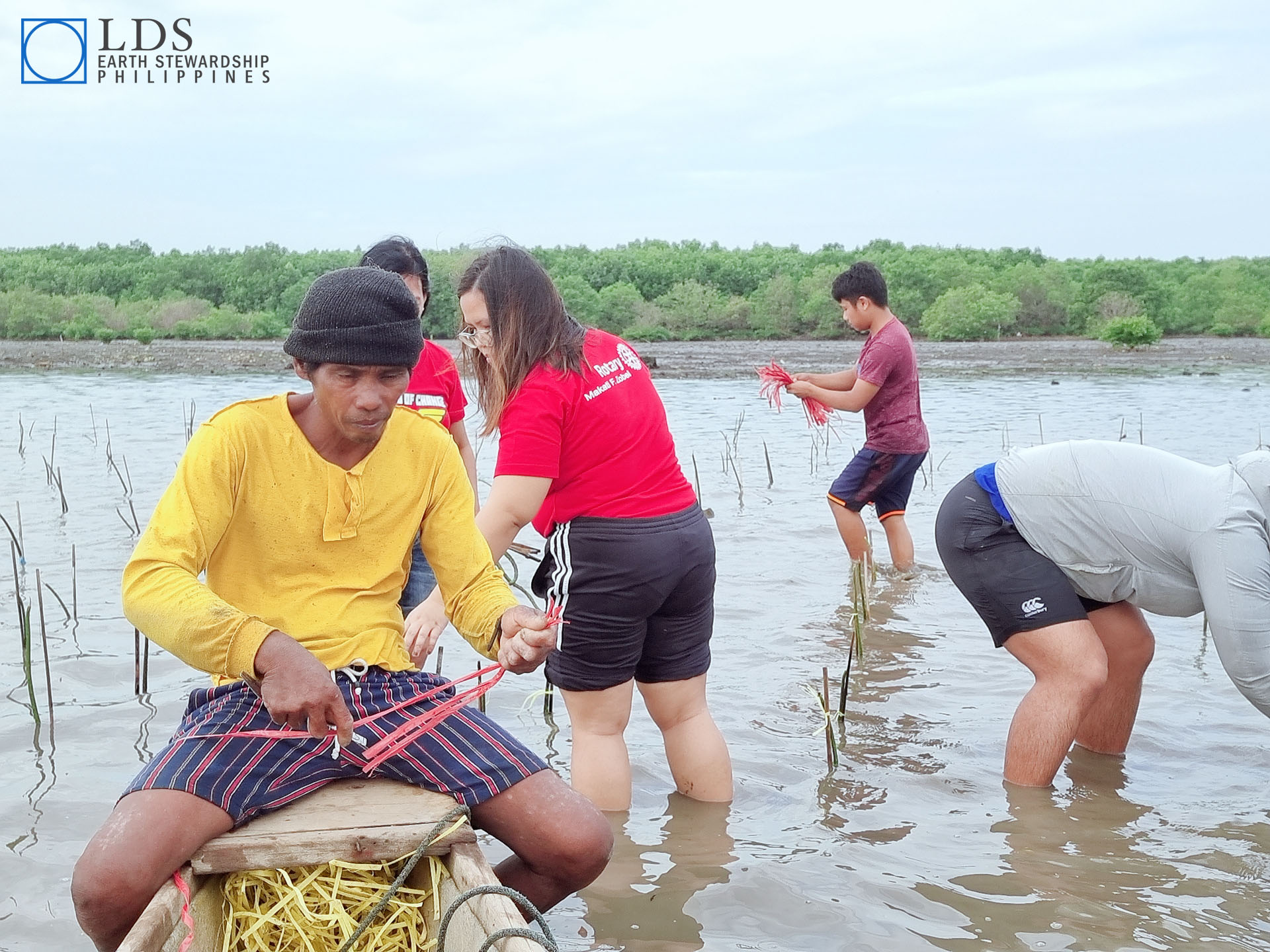 Earlier this year, Latter-day Saint Earth Stewardship started its first chapter in Asia: LDSES Philippines. Since that time, our members in the Philippines have been hard at work planting mangroves.
Earlier this year, Latter-day Saint Earth Stewardship started its first chapter in Asia: LDSES Philippines. Since that time, our members in the Philippines have been hard at work planting mangroves.
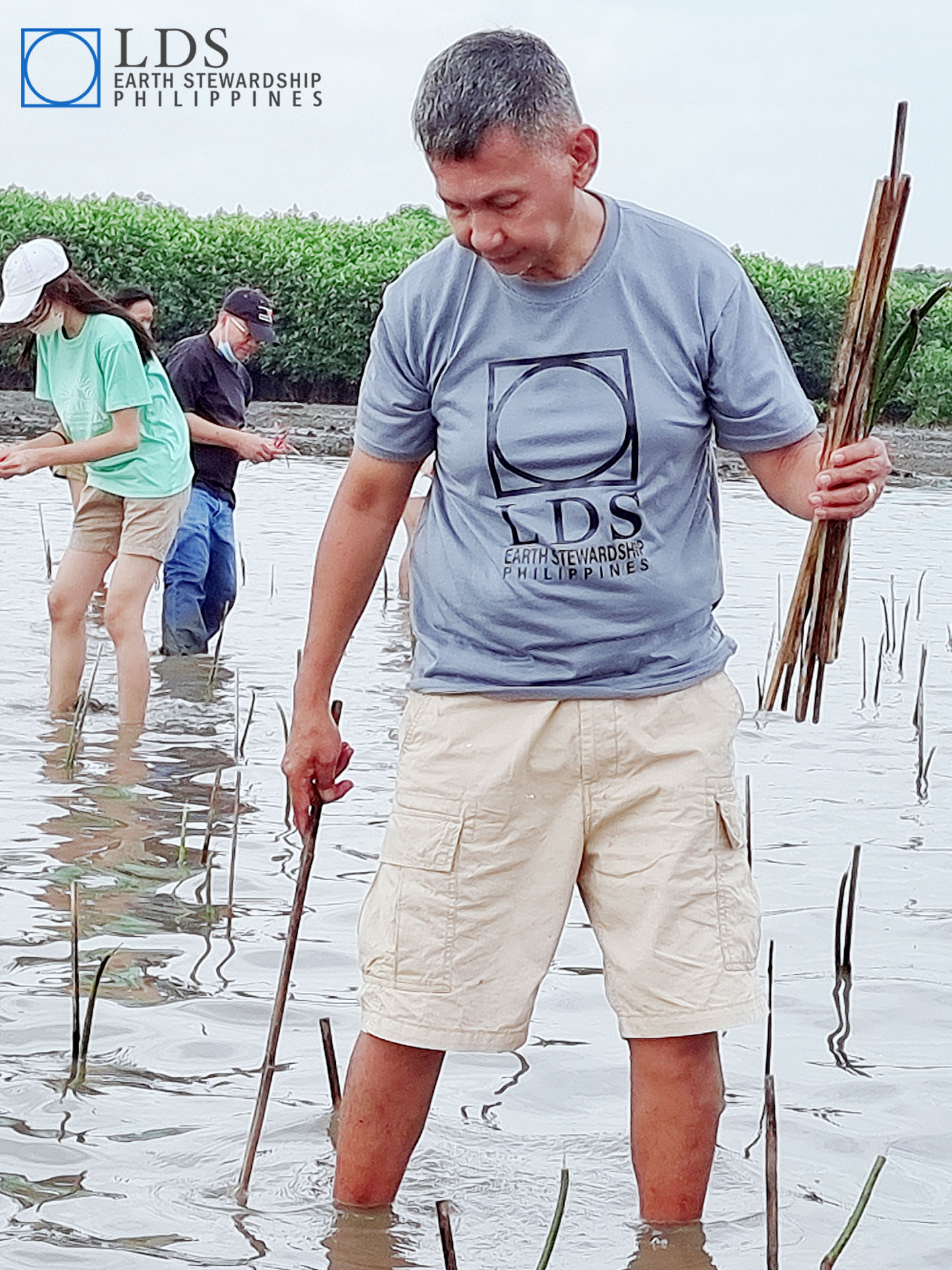
Mangroves are an essential part of many coastal ecosystems. Mangroves provide a habitat for fish and other marine species. Mangrove trees also filter water, absorb excess nutrients, and sequester carbon. And there’s more—mangrove roots help prevent erosion and stabilize shorelines, providing a natural defense system against the fierce typhoons that often affect the Philippines.
Despite these benefits, mangrove forests across the world are in decline. Thankfully, our LDSES chapter leaders and many others are doing their part to restore this critical habitat.

In February, LDSES Philippines and members of the Noveleta Ward partnered with the Rotary Club, the Philippine Naval Reserve and many other schools and organizations to plant a thousand mangrove trees in Cavite City, Philippines!
The work of LDSES Philippines is not done yet—another day of planting is scheduled for the Philippines’ National Day of Service this month.
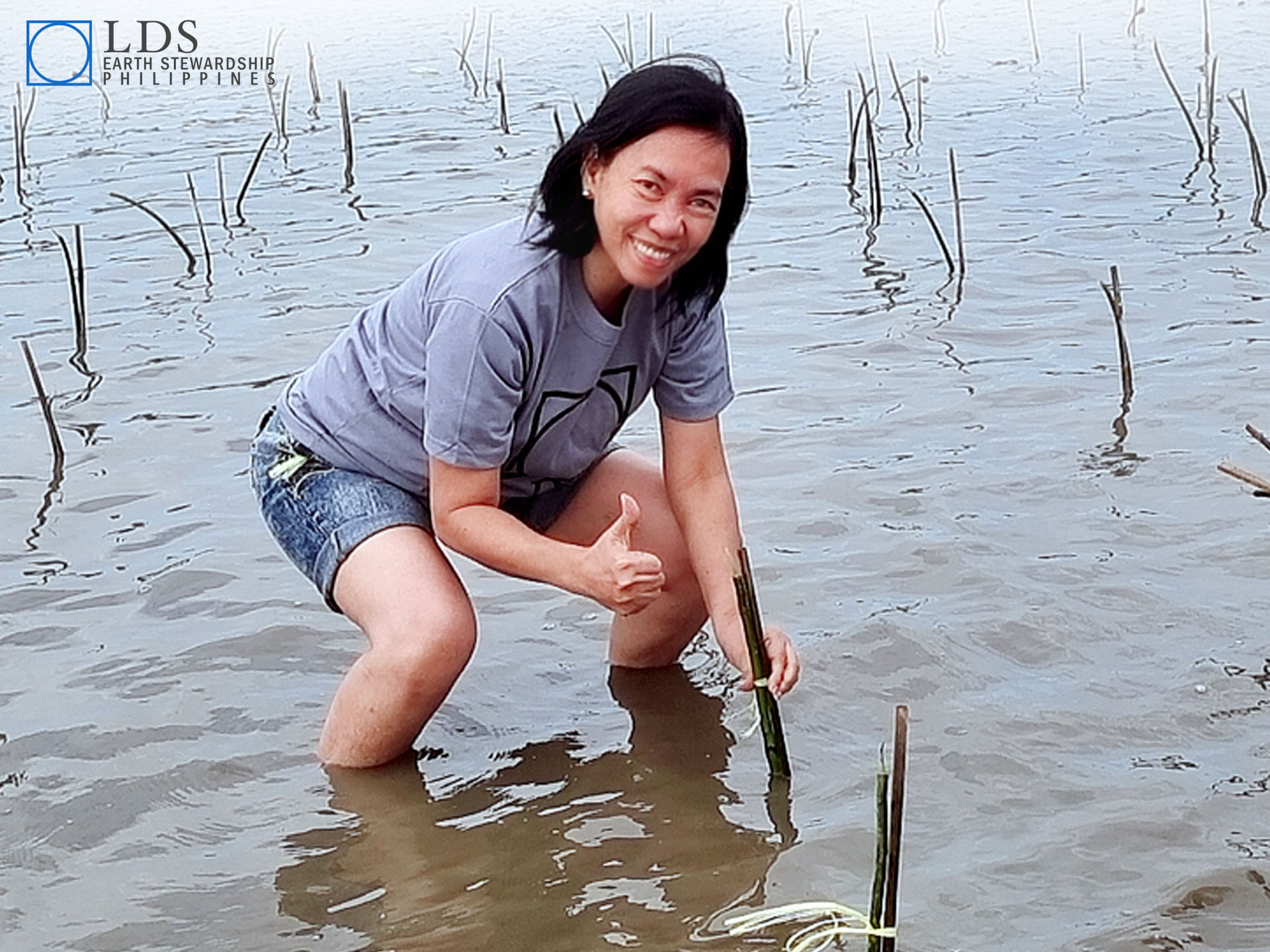
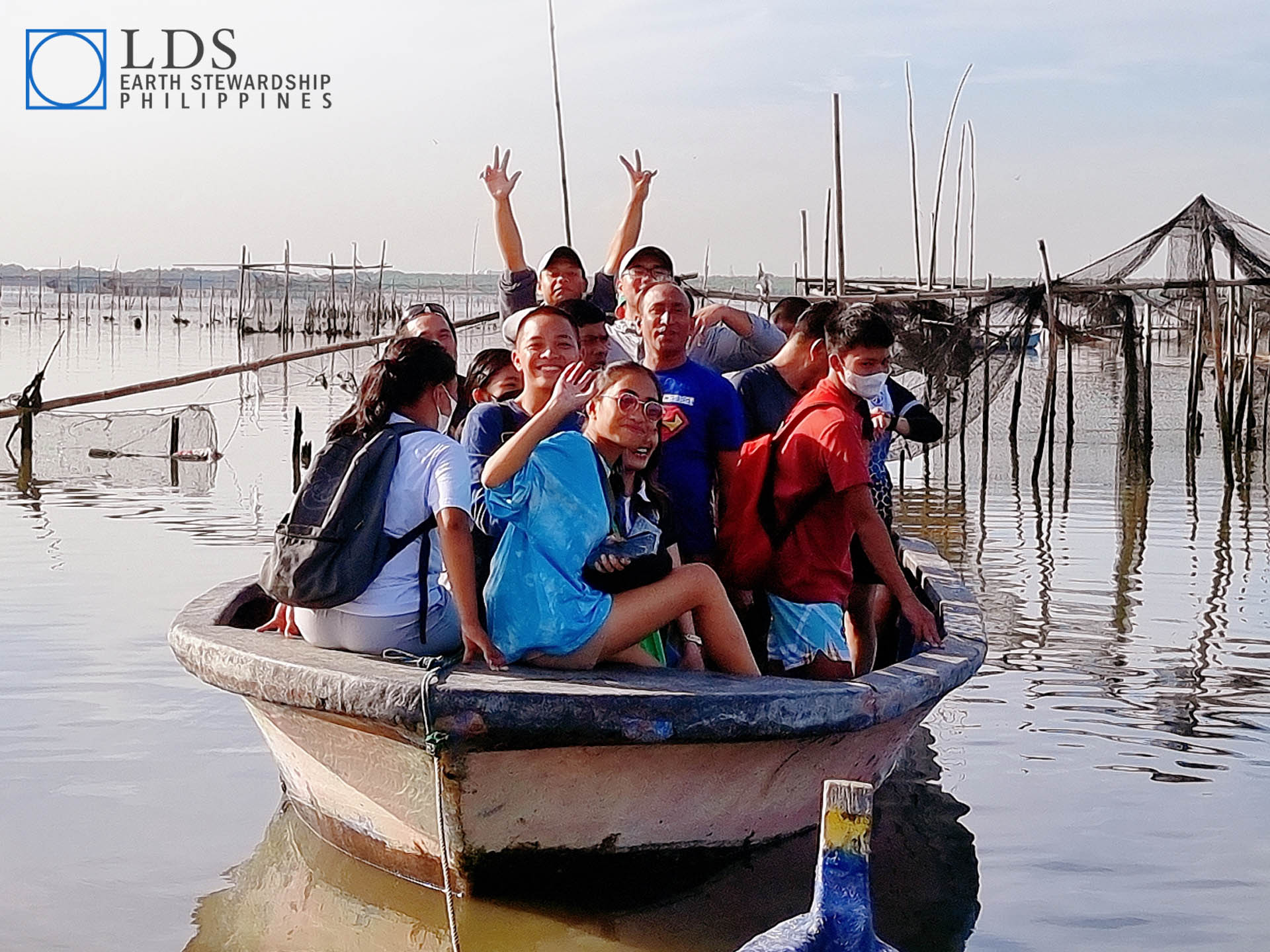

by Anilee Briscoe. All photos by Anilee Briscoe.
One day in 2020, I spotted a patch of flowers along the side of the road. The hum of hundreds of bees greeted me as I climbed out of the car, camera in hand. I proceeded to snap away. Curious about the species, I uploaded the photos to a plant identification app. No results. The flower remained unidentified for some time—it wasn’t until last year that, by chance, I took a Utah wildflower book off the shelf in a used bookstore and saw it on the cover: Rocky Mountain Beeplant (pictured above).
Though my search was originally unsuccessful, it sparked an interest in identifying the other plants I photographed during nature drives and hikes. I began to recognize them by name. Skyrocket, penstemon, blue flax, columbine, everlasting pea—every day, a new wildflower drew my attention (and camera!).
On one quest to photograph wildflowers, I stumbled upon a geranium different from the others. Instead of five petals, it had six. As I admired it, it struck me that this flower had been crafted with individual care. Similar sentiments have echoed in moments where I have crouched beside a flox, stepped over a creek, or soaked in a mountain vista. Same as the geranium, they pointed to a thoughtful Creator. Through these experiences, the Spirit confirmed: “all things denote there is a God; yea, even the earth, and all things that are upon the face of it . . .” (Alma 30:44). How blessed we are to live in such a world.
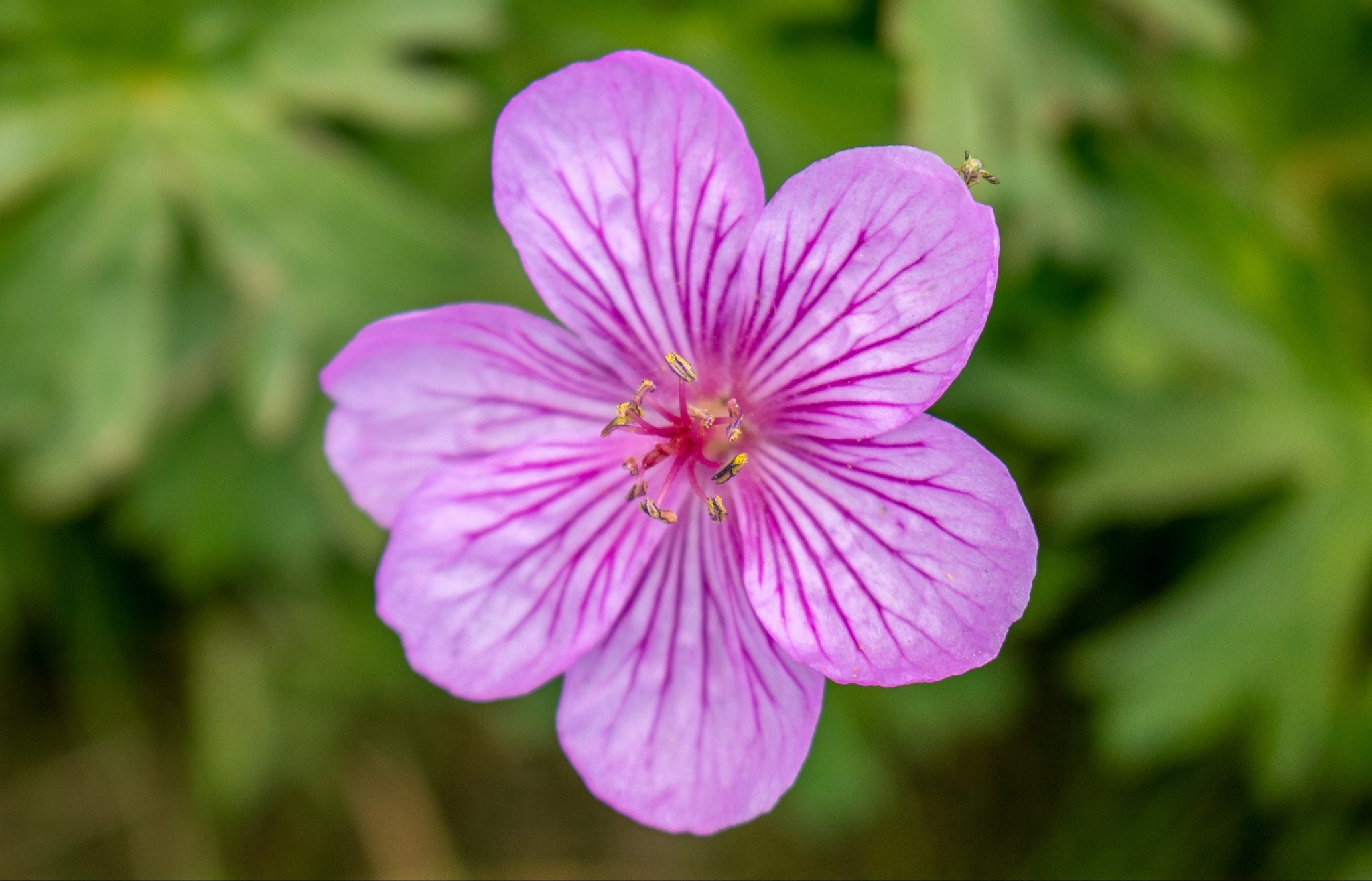
Like wildflower identification has fostered a deeper understanding of my Heavenly Father, studying any of God’s creations offers the opportunity to learn of Him and further appreciate His work. To those who have the desire, I encourage building enthusiasm in nearby nature to obtain these blessings. I recommend following these steps as a guide:
Practice Observation
When spring arrives, I take to hiking in the foothills near my home. Often on these hikes, I listen to music, staring at the trail ahead or down at my phone. Other times, I pull out my earbuds and watch. As my eyes draw off the trail, I notice acorns on scrub oak and plants not an inch tall. I see the beauty that otherwise slips unnoticed.
In his October 2011 conference talk, Elder Utchdorf reflects on an observation during a garden walk: “...I noticed, among all the glorious blooms, the tiniest flower. . . . [The forget-me-not] does not attract immediate attention; it is easy to overlook among larger and more vibrant flowers; yet it is just as beautiful, with its rich color that mirrors that of the bluest skies.”
Look for the “forget-me-nots.” They could be mushrooms under a log, a bluejay in a tree, or whatever draws the eye with wonder.
Identify
While observing, bring a reference book, draw sketches, download an app, or ask friends or family about your interest. In my case, I use an app like iNaturalist to identify wildflowers. If intrigued, I may search for further information. Is it edible or poisonous? Native or invasive? What does it symbolize?
Most answers are readily obtainable. Sometimes, like in the case of the Rocky Mountain Beeplant, a lack of an answer triggers a bout of curiosity that never dies.
Act
Learning allows us to be good stewards of the Earth. For me, knowledge has deepened my respect for the flowers I photograph. I walk more carefully, leave plants as they are, support conservation efforts, and share my enthusiasm with friends. Good stewardship requires acting with knowledge, whether planting milkweed for monarchs or hanging a bird feeder.
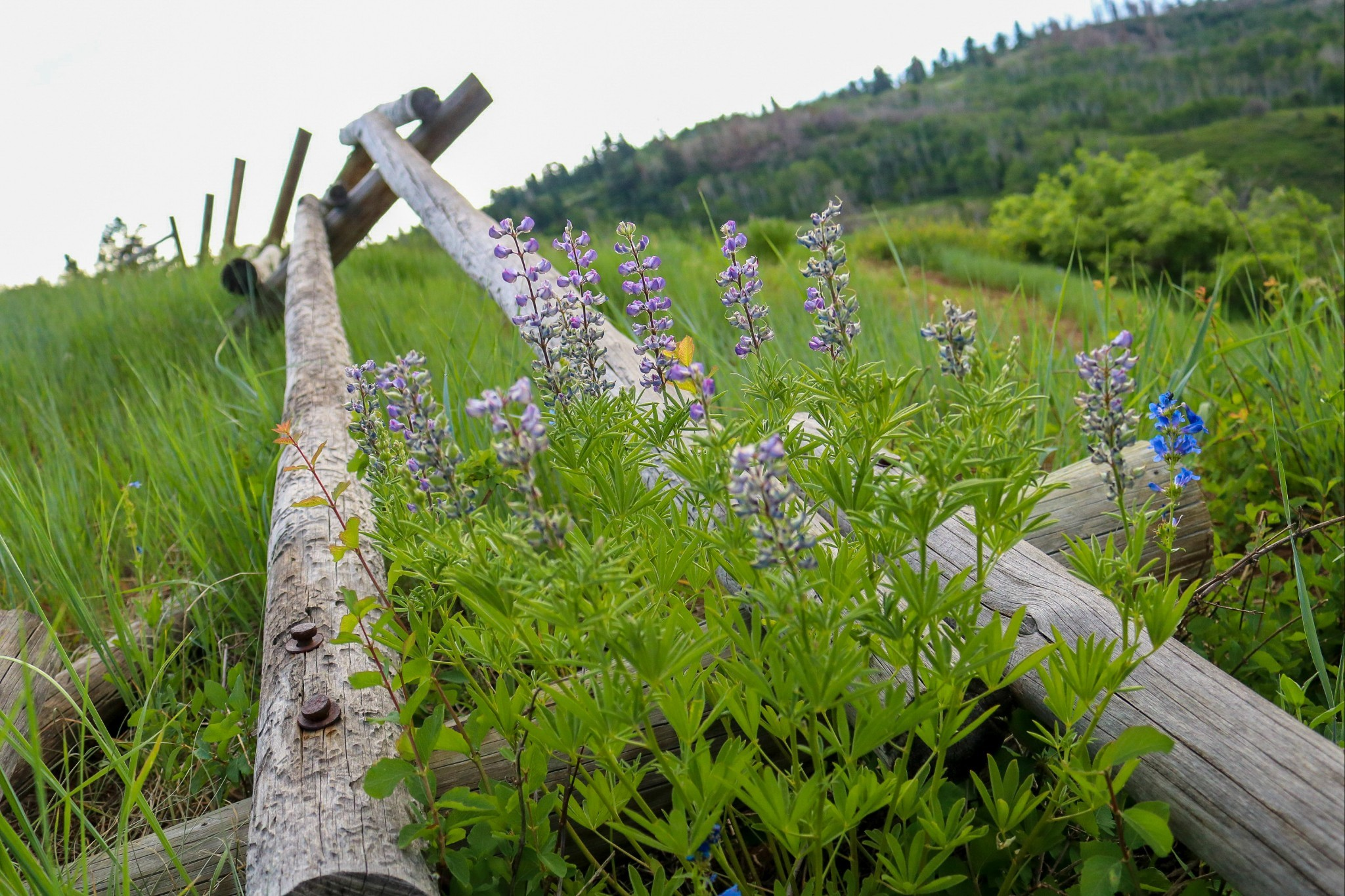
These steps inspire a connection with His creations, consequently inspiring a connection with Him. Those who live with less accessibility to nature may be discouraged by such an effort. But even in cement cracks, I have found asters and sunflowers springing up with more enthusiasm than dandelions. I am astounded by the biodiversity on the side of the road. It is as simple as God’s promise: “seek, and ye shall find” (Mathew 7:7). His creations are everywhere.
Anilee Briscoe is a grad student at the University of Utah working on her MPA with an emphasis in environmental policy. When there's no snow on the ground, she can be found in the mountains with her camera. Find more of Anilee's photos on Instagram @ironrose_photography or on her blog:www.tumblr.com/ironroseheart.
Note: Blog posts are written by volunteer writers; the opinions of writers are their own and are not necessarily representative of Latter-day Saint Earth Stewardship.
Global Recycling Day—Q&A with Glass Roots Recycling
Saturday, March 18 is Global Recycling Day! Global Recycling Day was started in 2018 to bring awareness to and encourage recycling all over the world. To celebrate, LDSES asked Glass Roots Recycling, a recycling service based in Provo, Utah, to answer some questions about how they got started and how to recycle glass. Read their response below and watch the video of their process here.

Pictured above: Chad Hyer from Glass Roots Recycling
LDSES: What inspired you to start Glass Roots Recycling?
Glass Roots Recycling: Glass Roots probably started at about 1 AM on a school night in a BYU freshman dorm room in a classic “what if session.” We all knew that glass was recyclable but never seemed to be able to find places where we could recycle it. After looking into how glass is recycled, we found that all you really need is a separate bin, and we felt that providing that bin was worth it. The rest is history.
LDSES: Why did you choose to focus on glass and not some other material (aluminum, plastic, etc.)?
Glass Roots Recycling: Glass is the most recyclable material. Despite this, it is one of the least recycled materials in the United States. Glass recycling is great for both the environment and the economy, and bringing glass recycling to communities is actually not incredibly difficult. Oftentimes, many environmental problems seem insurmountable and require large institutional changes, but it turns out that the glass problem can be solved by simple actions done by your average person. Hence, we chose Glass Roots.
LDSES: Is glass easier to recycle than other materials?
Glass Roots Recycling: Glass is infinitely recyclable and is really easy to turn back into products that can be shipped back out for use. Other recyclables can degrade over time and often eventually end up in landfills. This is not the case for glass. Hence the importance of recycling it.
LDSES: Where do you take the glass once you've collected it?
Glass Roots Recycling: Our glass is consolidated at a public glass dumpster at the Smith’s on Freedom Boulevard. From there, it is taken to Salt Lake City, where it is properly recycled by Momentum Recycling.
LDSES: How clean does glass need to be in order to be recycled?
Glass Roots Recycling: Unfortunately, the best kept secret of the glass recycling industry is that consumers don’t actually have to clean glass before recycling it. The recycling process takes care of attached labels, food, and caps, and washed and unwashed glass do not require different amounts of effort or money to recycle. Rather than washing your glass containers before recycling, conserve water!
There Shall Be A Record Kept Among You
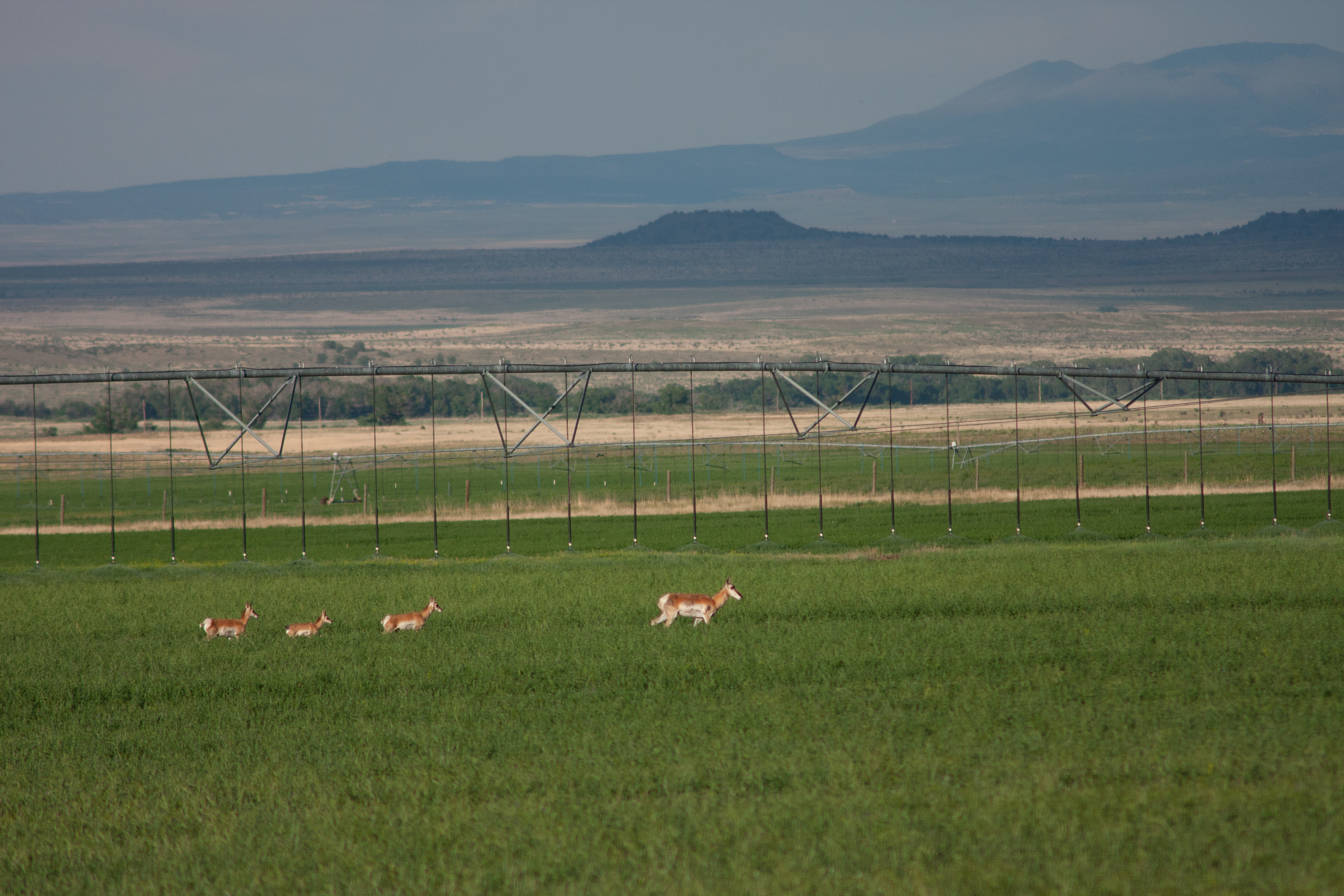
by Jessica Friedman
For several years, I worked as an animal caretaker at an outdoor education facility in New Mexico. Every day, I introduced children to both the domestic farm animals in my care and the abundant native wildlife that called the area home. Many of these kids had never met an animal besides their dog or cat, and I found purpose in fostering a love and respect for the natural world in these young souls.
One summer, I faced a challenging circumstance in my personal life. The barn had become my refuge, a place where I often felt the Spirit teaching and comforting me, so on one particularly difficult day, I sat on the fence between classes and prayed for the Lord’s help.
While I prayed, three wild pronghorn walked up to drink from a large water trough not ten feet from where I sat. These normally skittish creatures looked at me with no fear in their eyes, drank their fill, and moved away as quietly as they had come. The whole encounter lasted mere seconds, but I had the distinct impression that my loving Heavenly Father saw my distress and sent these animals to calm my heart and bring me joy.
I don’t think it’s any coincidence that the scriptures are full of stories of people going to natural places to meet God. Whether it’s Moses on Mt. Sinai, Enos hunting in the woods, or Joseph Smith in the Sacred Grove, these men all seemed to know that God often uses nature as the backdrop for life-changing spiritual experiences.
We only have these stories because those who were there kept a record of what they saw, heard, and felt. Without such records, the significance of these sacred moments would have been forgotten.
To quote President Spencer W. Kimball, “From time immemorial the Lord has counseled us to be a record-keeping people.” In fact, the very first revelation received by the newly organized Church of Jesus Christ of Latter-day Saints begins with the commandment that “there shall be a record kept among you” (D&C 21:1).
As we spend time enjoying and appreciating God’s creations, we open ourselves to the possibility of having testimony-strengthening experiences that deserve to be recorded. Even if nothing apparently significant happens, President Wilford Woodruff counseled, “Should we not have respect enough to God to make a record of those blessings which He pours out upon us?”
Thankfully, we live in an era when technology makes it easier than ever to keep a personal record. If writing a journal doesn’t appeal to you, you can record your experiences using photographs, videos, audio recordings, or art. Still, many find the thought of keeping a personal history daunting, a reticence that often stems from uncertainty over how to start or what to record. Using a journal prompt can relieve some of the pressure, especially as you ponder the question and pray for the Spirit’s guidance.
To get started, you might consider questions like these:
- How has spending time in nature helped strengthen your testimony of Heavenly Father and Jesus Christ?
- What is your favorite way to spend time in nature?
- Where is your favorite natural place? What makes it so meaningful to you?
- Spend 15 minutes observing nature. Record what you see and how it makes you feel.
- What service activities have you participated in that have benefited the natural world?
- What does the commandment to “multiply and replenish the earth” mean to you?
- What is your favorite kind of weather and why?
- What is your favorite season and why?
- How can you show gratitude to God for His creations?
- What have you learned about God’s Plan of Happiness by pondering the Creation?
- What was the most meaningful experience you have had in a natural setting?
The Book of Mormon prophet Nephi wrote, “For we labor diligently to write, to persuade our children, and also our brethren, to believe in Christ, and to be reconciled to God” (2 Ne. 25:23). As we keep a personal record of the ways God has spoken to us in natural places, not only will we help foster a love and respect for the natural world in our posterity, but we will also help strengthen their testimonies of God the Father and Jesus Christ. It is my hope that my posterity will read my journal entry about the pronghorn and feel inspired to look for how God uses nature to comfort them and bring joy to their own lives.
And then I hope they’ll make a record of their own.
***
Jessica Friedman is an illustrator and graphic designer who lives in Pocatello, Idaho, with her husband, their rescue dog, and a jungle of houseplants. Her love for the natural world was nurtured by spending summers at her grandparent’s lakeside cabin near Algonquin Provincial Park in Ontario, Canada. She enjoys hiking, camping, and horseback riding, and someday, she’ll go back to teaching kids about animals on her own farm.
Photo above by Jessica Friedman.
Note: Blog posts are written by volunteer writers; the opinions of writers are their own and are not necessarily representative of Latter-day Saint Earth Stewardship.
New Inland Northwest Group
LDSES keeps growing and we are excited to announce the addition of another local chapter: LDSES Inland Northwest! This group includes the Spokane/Coeur d’Alene and Moscow/Pullman areas in Eastern Washington and Northern Idaho. If you are interested in learning more, please contact Alisse Metge at or join their Facebook group.
Keep reading to learn a little more about Alisse, chair of the INW group. We are excited to have her on board!
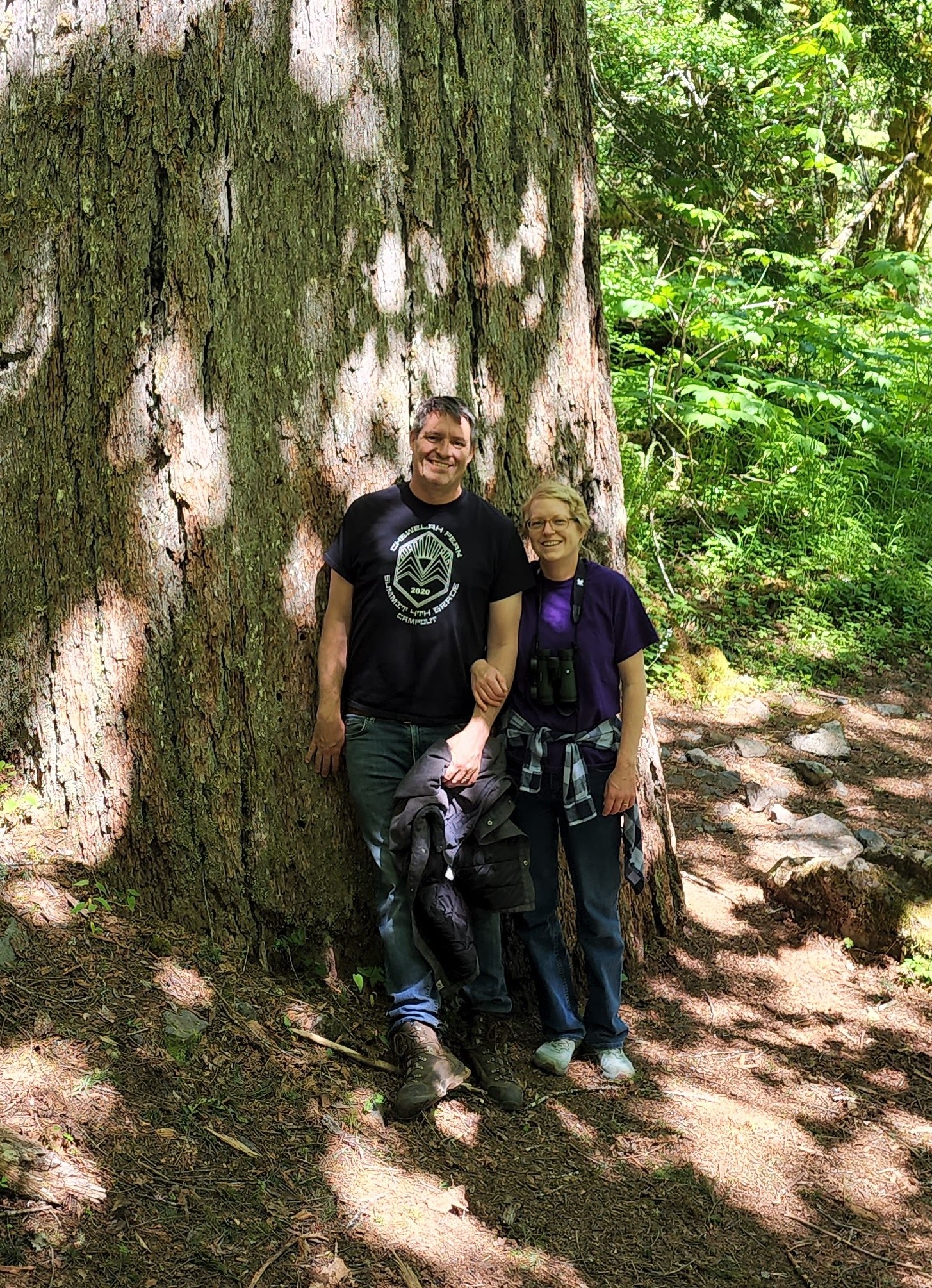
Alisse Garner Metge grew up next to the mountains of Provo, Utah, and spent as much of her childhood outdoors as she could. By fifth grade, she knew she wanted to be a biologist, and in middle school biology class, she fell in love with genetics. She received a B.S. in Molecular Biology and Conservation Biology from BYU and a M.S. in Wildlife Resources from the University of Idaho. She spent several years working as a genetics researcher, first in the biotech industry and then in the field of conservation genetics, before putting her biology career on hold to be a full-time mom. While raising her three children (and alas, not being able to set up a genetics lab in her basement), she shifted her focus to researching and writing about the science-religion interface, including religion and conservation. She was pleased to be able to contribute a chapter to the book Stewardship and the Creation: LDS Perspectives on the Environment, as well as to serve as a board member for the Religion and Conservation Biology working group of the Society for Conservation Biology. Alisse has always felt great harmony between gospel doctrines and her studies in science and loves the fact that the gospel of Jesus Christ encompasses all truth.
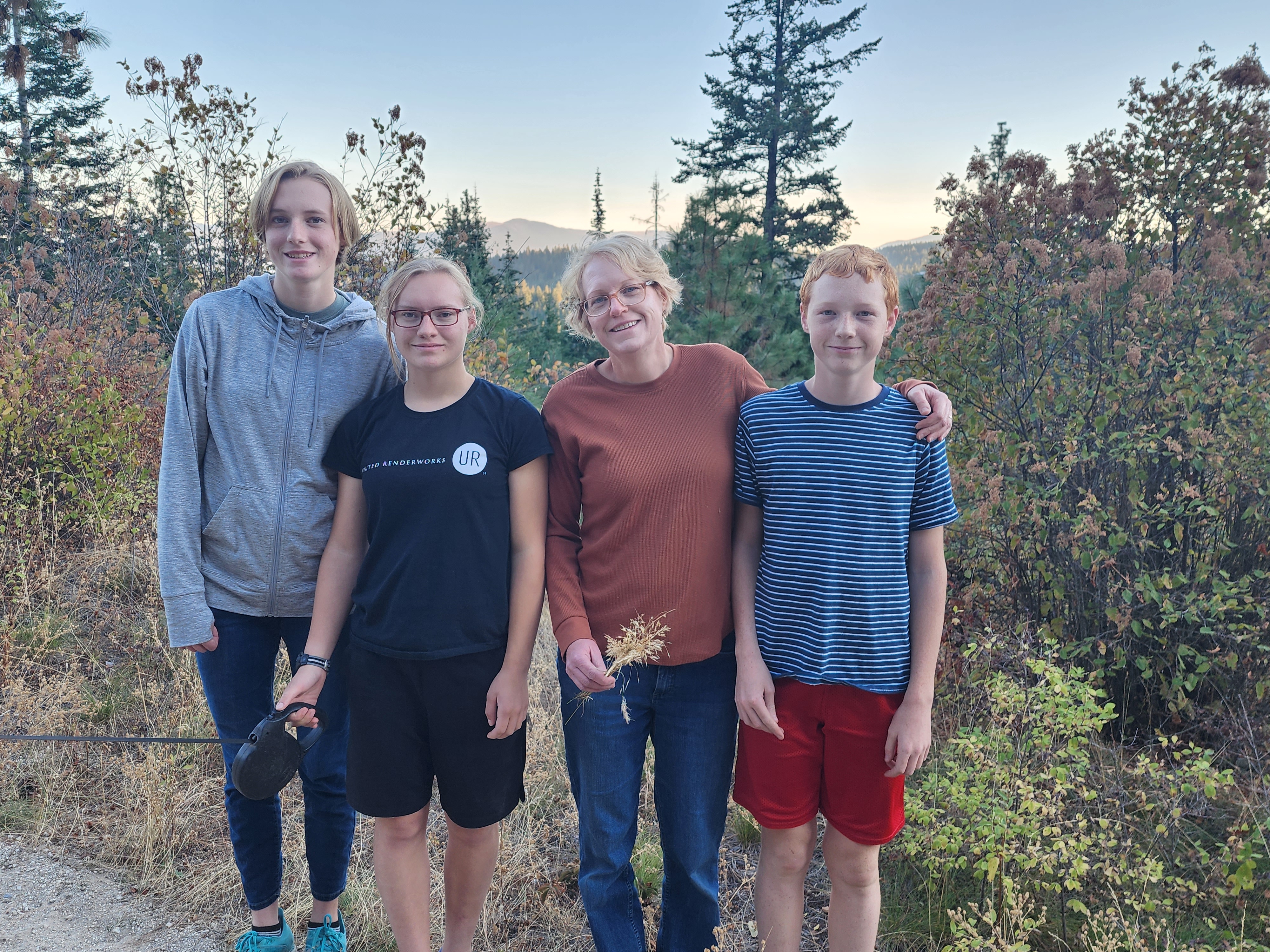
Alisse and her family moved to a small farm in Spokane Valley, Washington, about six years ago and have enjoyed learning, albeit imperfectly, to be stewards over their little plot of land. Alisse’s husband, Will, loves plants and gardening, and Alisse is always a push-over for acquiring more animals. The family loves feeling connected to the land through their little efforts at farming and also through hiking and being outdoors together. Observing the beauties of nature and feeling the presence of God in his creations has always been foundational to Alisse’s testimony of the gospel. She writes, “When I contemplate the inescapable fact that other living things on this earth must daily be sacrificed in order to sustain my own life, the earth and its plants and creatures become very tangible symbols of the atonement of Christ, and I feel to treat them as sacred. The rich gospel doctrines related to the Creation and God’s great love in entrusting us with its care inspire deep reverence, gratitude, and the desire to be a better steward.”

Alisse has been a member of LDSES for several years and is pleased to help start a local group in the Inland Northwest (which includes the Spokane/Coeur d’Alene and Moscow/Pullman areas in Eastern Washington and Northern Idaho). The group is hoping to make a positive difference in their corner of the world, beginning with service/cleanup projects on Earth Day, April 22. They also hope to be helpful through connections the group’s Co-Chair, Christopher Barnes, has with a local community garden, and anticipate holding activities, both remotely and in person, to appreciate nature together, beautify their environment, and discuss gospel doctrines related to stewardship. They invite anyone in the Inland Northwest to join with them!
You’re ready to start on your environmental journey! What now?

by Phoebe Christensen
Gaining a new interest comes with a ton of ground to cover. For many people, becoming interested in environmental topics inspire a deep desire to do something, but the need for action seems so vast that it seems almost impossible to decide where to begin. This post will cover three aspects of starting on your journey:
- how do I overcome environmentally unhelpful narratives I might have grown up with?
- how do I advocate for our planet without guilting/being obnoxious to those around me?
- what do I even do to start?
Overcoming Environmentally Unhelpful Narratives:
I grew up in an atmosphere in which taking care of the environment was not a high priority. Getting over that emotional hurdle is a process that many, myself included, experience when they first realize that the environment is important to them.
One obstacle I encountered (and still encounter often) is when some of the narratives I grew up with come out of the woodwork at random moments. For example, sometimes I still feel uncomfortable with the phrase “climate change,” despite caring a lot about this particular environmental threat. For those experiencing this, it’s more common than you might expect. You’re not alone.
Unlearning unhelpful narratives can be difficult in any case, and reassurance during the process is crucial. I think the biggest bout of reassurance I’ve ever received in regards to conservation was something Bishop Caussé said in his last General Conference talk: “Beyond being simply a scientific or political necessity, the care of the earth and of our natural environment is a sacred responsibility entrusted to us by God, which should fill us with a deep sense of duty and humility. It is also an integral component of our discipleship. How can we honor and love Heavenly Father and Jesus Christ without honoring and loving Their creations?”
God is with us in this.
Advocating for Our Planet Without Guilting People or Feeling Obnoxious:
A lot of people worry that talking about and living in an Earth-friendly way will cause other people to feel like we’re guilt-tripping them, or getting political about it. To you who have these worries, I say this: the best way to spread awareness of the environment is a lot like the best way to spread the truth of the Gospel—by example.
Example doesn’t infringe on other peoples’ rights or ways of living, nor does it lecture or disturb those who are around it. Example does prompt curiosity, and, eventually, questions. If you’re like me, and are sensitive about topics that mean a lot to you, my best advice is to prepare yourself for these questions so that when they come, you’ll feel like you’re representing yourself—and your cause—in the manner in which best reflects what you feel.
If you feel comfortable and excited to share more about earth stewardship, by all means, do! I, personally, am going to share the fact that I wrote this post because it’s the kind of thing I’m excited to share and would genuinely, comfortably talk about. If it’s not genuine and it’s not comfortable, don’t pressure yourself into it.
What do I even do to start?
Starting on an environmental journey feels so overwhelming because the average human experience does not have the welfare of the world at large in mind. This makes living to protect the environment, paradoxically, a more difficult human experience. To make this transition a little easier, however, here’s a list of things that can help you get started!
- Use what already exists. Some examples are thrifting your clothes instead of getting them from stores, finding furniture off of Facebook marketplace instead of buying it new, or, (the classic) using tote bags you or family members already have instead of using disposable ones at the grocery store.
- Learn slowly. This is not to say that environmental information is unimportant, but it can be overwhelming. There’s so much out there to learn, from fast fashion vs. slow fashion to exploitative corporate practices to natural lawns vs. grass lawns, and everything in between. Learn at your own pace, and learn as much as you can.
- Get involved! You can search “my city/county/state environmentalist groups,” and a bunch of options should pop up! There is strength in numbers, especially when it comes to causes. Volunteering for an environmental nonprofit is an invaluable way to help! It can take many forms, from starting petitions to organizing cleanups to putting together a rally, but all are invaluable ways of fighting for conservation. Find out who your representatives are, on both a state and federal level. Feel free to reach out to them regarding issues that you’re passionate about; after all, that’s why they’re there.
- Be kind to yourself, and don’t be afraid to take your time. Rome wasn’t built in a day, so give yourself time when cultivating a sustainable lifestyle that works for you.
- Lastly, find some time to go out in nature. I think it’s vital to remember why these changes matter, and what we’re doing it for. We’re here to protect God’s greatest gift to each of us, and experiencing that gift as often as possible can bring us closer to Him.
We’re here to create a better world for each and every one of God’s children. This is both as figurative and as literal as you can possibly imagine. If you feel passionately about protecting God’s Earth and making it better for everyone on it, find what works for you. The Latter-day Saint Earth Stewardship website is www.ldsearthstewardship.org,and you can find more information there!
***
Phoebe Christensen lives in Utah, USA, and is currently studying English at UVU. Most nights, you’ll find her watching a show with her husband and dog. Phoebe is an avid crocheter, has almost finished reading The Fellowship of the Ring, and loves hiking.
Note: Blog posts are written by volunteer writers; the opinions of writers are their own and are not necessarily representative of Latter-day Saint Earth Stewardship.
New Local Group in Northern California
We are excited to announce a new chapter of Latter-day Saint Earth Stewardship in Northern California.
Here is a message from Pam Severson, chair of the Nor Cal group:
"Hi! My name is Pam Severson, and I was born in Calgary, Canada. Because of my upbringing in the beautiful gateway to the Rockies, I've always had a deep and profound connection to nature. From a young age my parents would take me hiking in Banff National Park, where I learned to feel and recognize the majesty of all of God's creations.
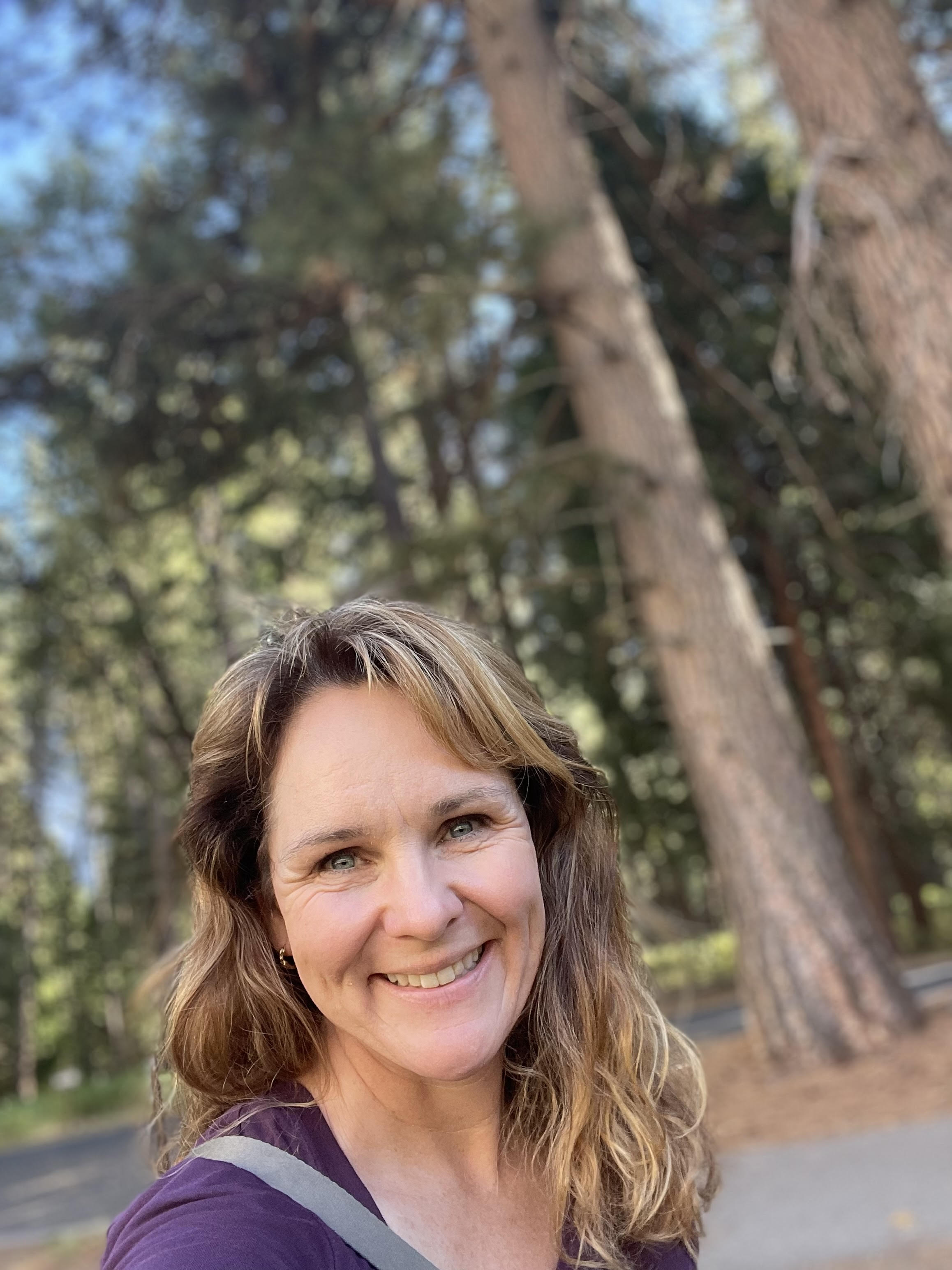
As a young college student I worked at a wholesale nursery with trees, shrubs, and local bedding plants. I learned to care for the plantings and I began helping with the propagation of various native species. Watching plants grow from bare root, to seedling, and to maturity was surprisingly satisfying. I took night classes from Dutch immigrants who mastered the art of floral design.
My secret plant life stayed with me as I traveled to France to serve a mission for the Church of Jesus Christ of Latter-day Saints. My first service as a missionary was creating a wedding bouquet for an investigator and her fiancé on the day of their wedding. I kept doodles of favorite plant combinations I would see at Chateaus or people's homes throughout my mission. Thinking that Horticulture was not a prestigious enough career, I completed BYU's Accounting program and went to work instead for Deloitte and Touche.
After my five children were old enough, I felt the pull to take up Master's Floral Design classes again for five years. While participating in the classes and designing several weddings and larger events, I felt guilty about the amount of waste in the industry. At the time, one of my twin daughters was enrolled in an AP Environmental Science class in High School. I was curious! As her first semester rolled on, I felt the nudge to dump floral design and begin Landscape Design classes at Merritt College in Oakland.
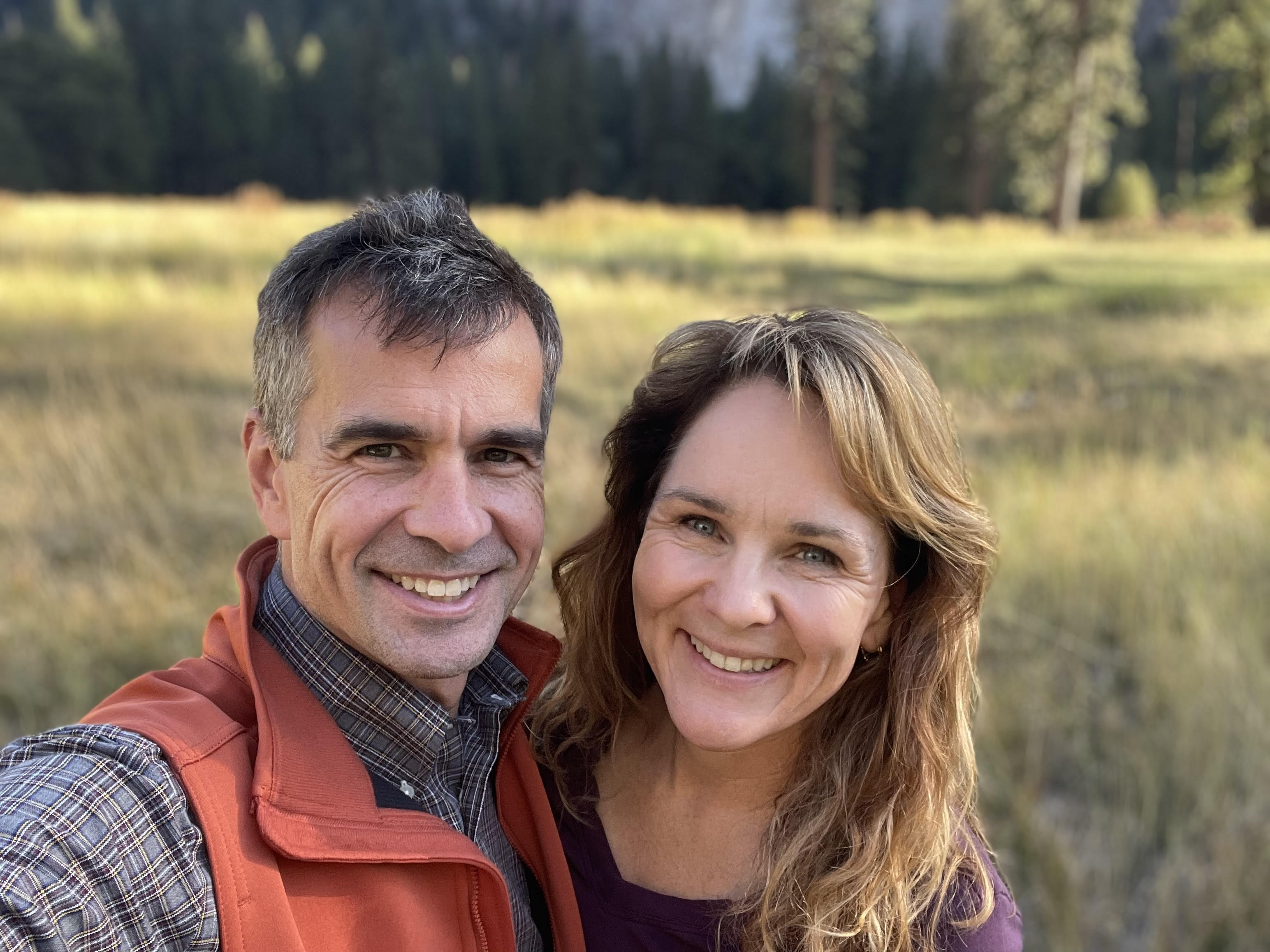
Four years later, I am taking my final class to graduate from Merritt's Landscape Architecture program. My passion is finding ways to create beauty while encouraging sustainable residential gardens and gathering places. With the pandemic, I've recognized the need both emotionally and physically to gather outdoors. Creation and creation stewardship is a deep curiosity, which I continue to explore academically and on a project basis.
As Chair of the new Northern California LDS Earth Stewards, I intended to help others find ways to cultivate and preserve this beautiful place in which we live. I would love to have you join us in exploring our responsibility to cultivate and preserve."
If you'd like to learn more about LDSES Northern California, email them at or join their Facebook group.
New Local Group in the Philippines
Latter-day Saint Earth Stewardship has officially reached the Philippines!
Here is a introduction to Anthony Cama, the chair of LDSES Philippines. Anthony and his co-chairs have a lot of exciting things planned for this group!

Anthony Debuque Cama Jr. is a Web Developer and Graphic Designer and serves as a member of the Marikina Stake High Council in the Philippines. As a member of the Rotary Club, he is actively engaged in lots of community service. As he found the homepage of Latter-day Saint Earth Stewardship he overwhelmingly felt a deep desire to join and decided to start a group in the Philippines.
"I suddenly had a strong feeling that I must do something in fulfilling my sacred responsibilities for Mother Earth. That is the time I really see and understand the gradual destruction of the magnificent creation of our Heavenly Father," Brother Cama said.
Together with four fellow church members with diverse backgrounds they spearheaded LDSES Philippines. They schedule to launch an initiative for mangrove planting in the Cañacao wetlands. The wetlands include a sizeable portion which became a place where storks settled during the months of January and February. The project will commence late next month as they begin in negotiating with the local government in the area.
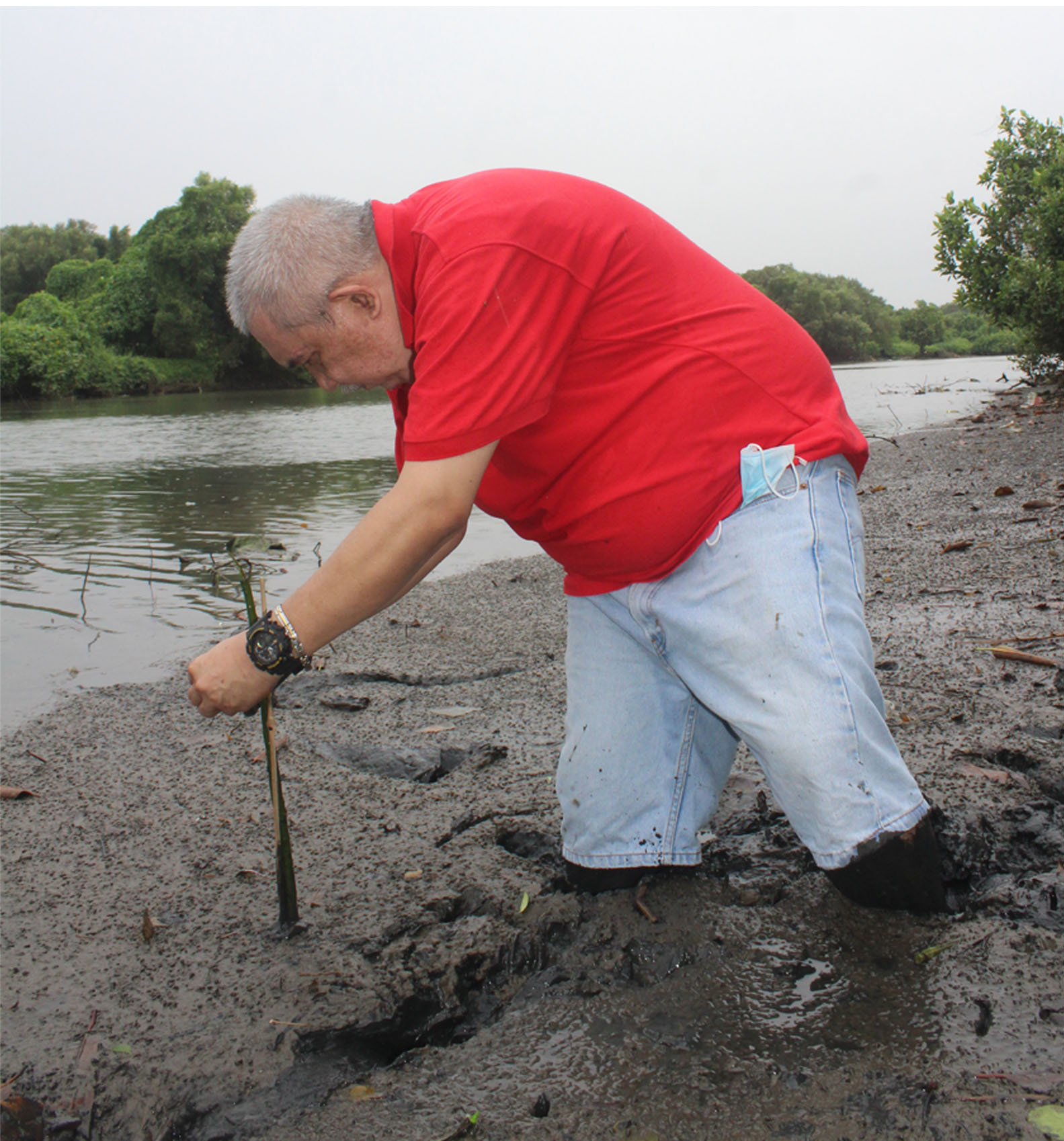
An eco-gardening project will be simultaneously launched also with a couple of local stakes as recipients. The Rise and Rebuild foundation are looking to collaborate with the LDSES Philippines for an environmental project which will use plastic bottles to manufacture bricks.
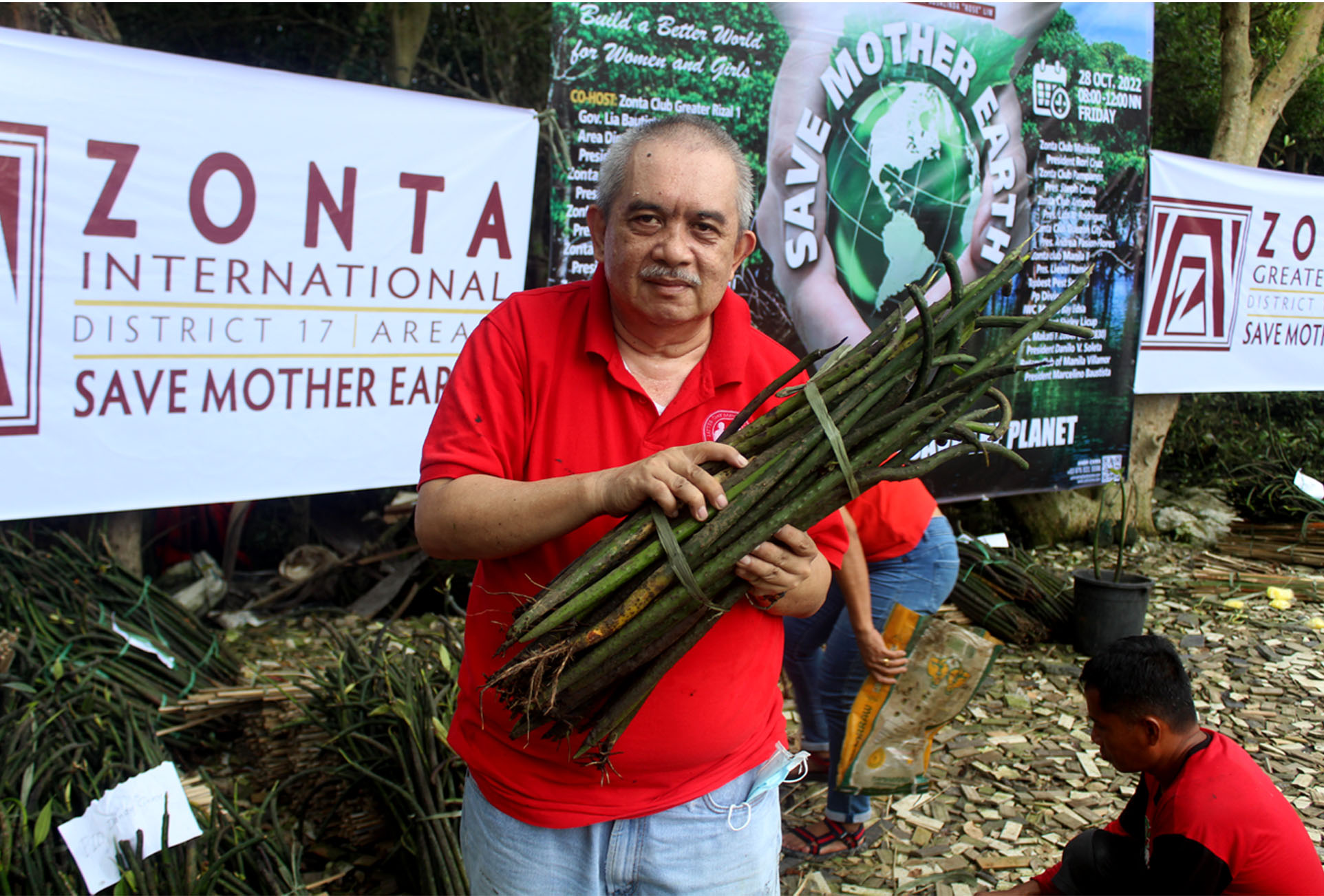
In God's grace the LDSES Philippines will be having lots of projects in the near future.
If you would like more information about LDSES Philippines please email or join their Facebook group.

